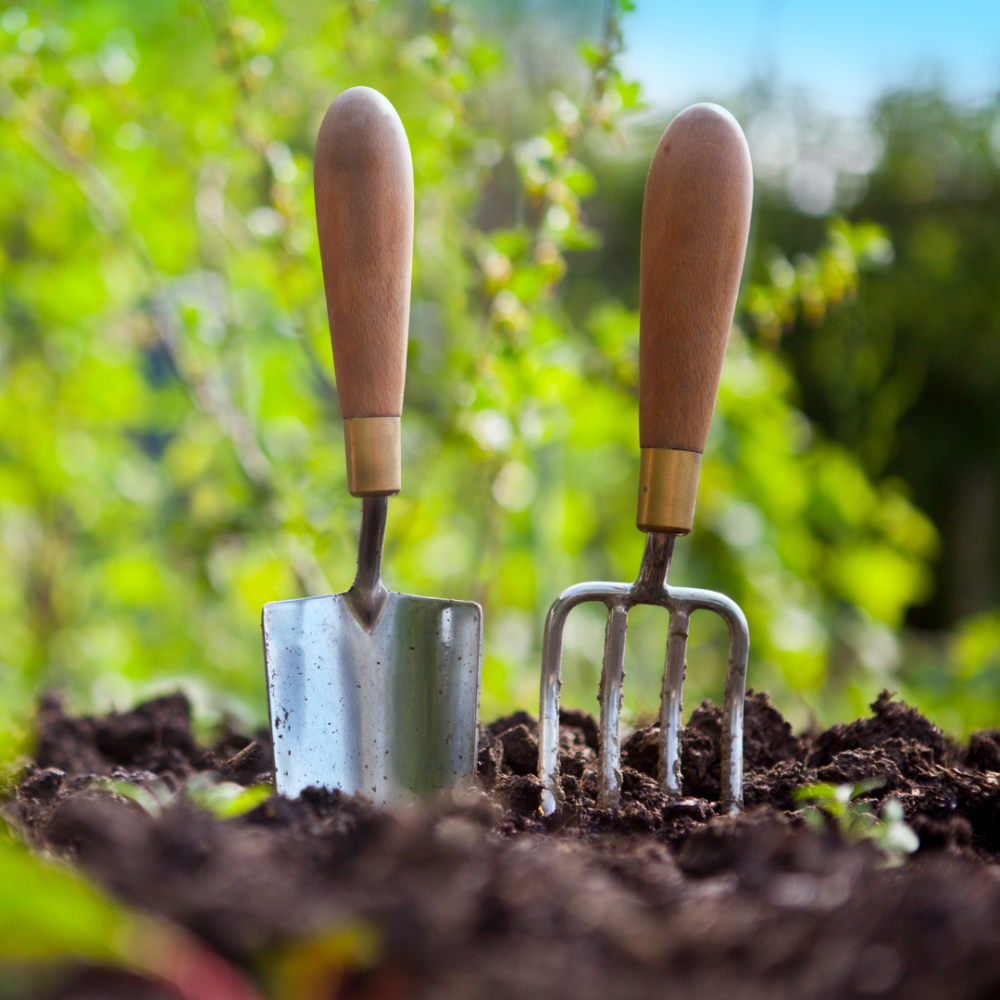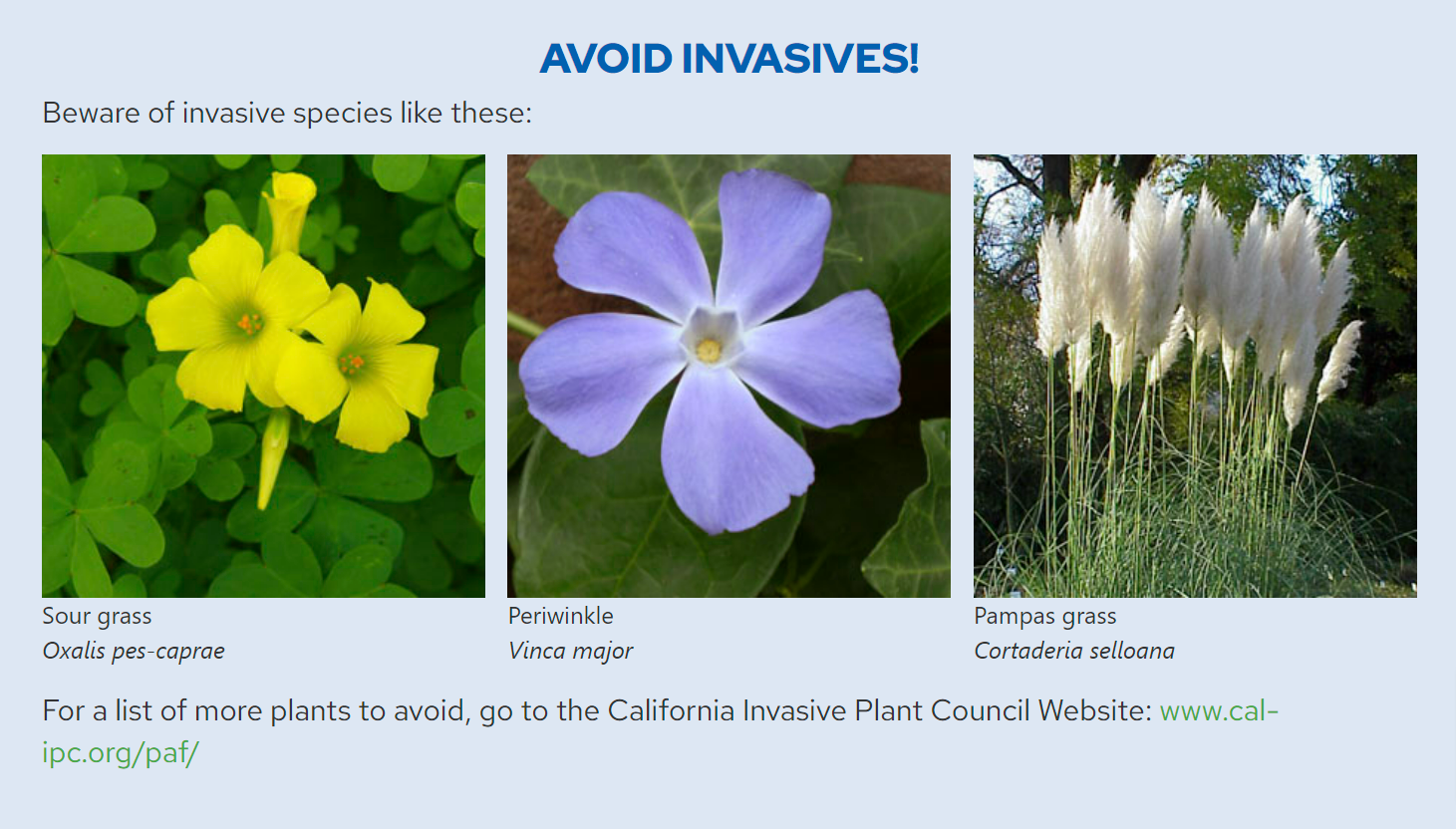
Learn about planting a healthy garden while protecting the health of people, pets, and our environment with these tips from the City of Goleta Environmental Services Division. Planting a variety of flowering plants that bloom throughout the spring and summer gives you a beautiful garden and can also reduce the number of garden pests. Many commonly available plants— including drought tolerant plants—attract beneficial insects that feed on pests you don’t want around!
Attract Beneficial Insects, and Keep them Around
Beneficial insects are the ultimate non-toxic pest control. And they do all of the work for you! Soldier beetles, syrphid flies, and ladybugs and their larvae attack aphids. Lacewings will go after just about any insect pest.
Use pesticides only as a last resort. If you must use a pesticide, choose the least toxic product designed to kill the specific target pest. Bees and other beneficial insects are often more sensitive to pesticides than the pests you want to kill. What’s worse, after pesticide use has eliminated the beneficial insects, the pests are free to multiply… and you’ll need to spray again.
Choosing the Right Plant
Plant for success! Many of the plants that attract beneficial insects are California natives that should do well here. It’s important to learn about your garden—what type of soil you have and how much sunlight you get throughout the day and during different seasons—and choose plants that fit in.
- Read the label! Most nurseries provide detailed information about plants’ blooming habits and water and sunlight requirements. For plants that are pest-prone, such as hollyhocks and fuchsias, look for varieties described as pest- and disease-resistant.
- Before you buy a plant, check the roots. Gently pull or knock the plant out of its pot to make sure it’s not root-bound. Don’t buy a plant with roots that are kinked, growing out of the bottom of the container, or surrounding the root ball. Also, don’t buy a plant if its root crown (the area where the roots meet the stem or trunk) is soft or rotten.
- Talk to your local garden club, and check out these resources to help you choose the right plants:
-
- University of California Cooperative Extension Master Gardeners
- California Native Plant Society
- Search the web for waterwise plants to find a list for your area.
Caring for your Plants
Knowing your plant’s needs for water, pruning, and fertilizer will help you keep your garden healthy. Even drought-tolerant plants need regular water to become established. During their first two growing seasons, water new plants deeply twice a week so that their roots will grow down into the soil. You may have to water young plants more often during hot weather.
- Don’t pile soil around the plant any higher than the root crown. Don’t plant in a depression that will allow water to wash soil down around the stem or trunk and cover the root crown. A continually moist root crown can cause rot.
- Cover bare soil with mulch. Mulch conserves soil moisture so plants don’t dry out as quickly. A four-inch layer of mulch will prevent most annual weeds from growing, and any weeds that do sprout can be pulled out more easily.
- Use a mulch of leaves, bark, or composted manure and/or garden waste to provide organic matter to the soil and a slow, steady flow of nutrients to plants. Make sure not to cover the crown of the plant.
- If you need to fertilize, use organic, slow-release fertilizers.
- Learn how and when to prune your plants, and don’t prune more than recommended. Severe pruning can damage the plant and encourage pests and diseases.

Find more information on planting a healthy garden in our OWOW brochures in English and Spanish.
The City of Goleta along with the Cities of Buellton, Carpinteria, Solvang, Santa Barbara, Santa Maria, and the County of Santa Barbara have partnered with the OWOW organization to promote the use of less-toxic products in an effort to reduce pesticide pollution in our communities. By reducing pesticide use and the use of less-toxic products around the home, you can help reduce pesticides and other pollutants such as herbicides and fertilizers from being picked up while watering or when it rains and transported to the nearest storm drain inlet and into our waterways. The OWOW website is a great resource for finding less-toxic products to use around your home or garden.


